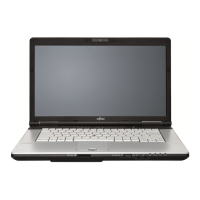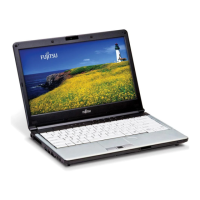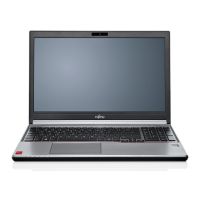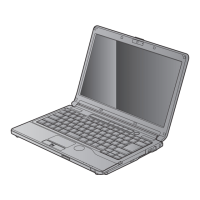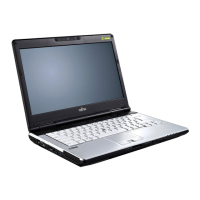38
LifeBook E Series – Section 3
Power Management
Your LifeBook notebook has many options and features
for conserving battery power. Some of these features are
automatic and need no user intervention, such as those
for the internal modem. However, others depend on the
parameters you set to best suit your operating condi-
tions, such as those for the display brightness. Internal
power management for your LifeBook notebook may be
controlled from settings made in your operating system,
pre-bundled power management application*, or from
settings made in the BIOS setup utility.
Besides the options available for conserving battery
power, there are also some things that you can do to
prevent your battery from running down as quickly.
For example, you can create an appropriate power saving
profile, put your notebook into Suspend mode when it is
not performing an operation, and you can limit the use
of high power devices. As with all mobile, battery
powered computers, there is a trade-off between
performance and power savings.
* Available on LifeBook notebook models with Windows 98
Second Edition pre-installed.
POWER AND SUSPEND/RESUME BUTTON
When your LifeBook notebook is active, the Power and
Suspend/Resume button can be used to manually put
your notebook into Suspend mode. Push the Power and
Suspend/Resume button when your notebook is active,
but not actively accessing anything, and immediately
release the button. You will hear two short beeps and
your system will enter Suspend mode.
If your notebook is suspended, pushing the Power and
Suspend/Resume button will return your notebook to
active operation. You can tell whether or not your
system is in Suspend mode by looking at the Power indi-
cator. (See Figure 2-9 on page 14 for location) If the indi-
cator is visible and not flashing, your LifeBook notebook
is fully operational. If the indicator is both visible and
flashing, your notebook is in Suspend mode. If the indi-
cator is not visible at all, the power is off or your note-
book is in Save-to-Disk mode. (See Save-to-Disk Mode)
SUSPEND MODE
Suspend or Standby mode in Windows 98 Second
Edition or Windows 2000 Professional saves the contents
of your LifeBook notebook’s system memory during
periods of inactivity by maintaining power to critical
parts. This mode will turn off the CPU, the display, the
hard drive, and all of the other internal components
except those necessary to maintain system memory and
allow for restarting. Your LifeBook notebook can be put
in Suspend mode by:
■
Pressing the Power and Suspend/Resume button when
your system is turned on.
■
Selecting Standby from the Windows Shut Down
menu.
■
Timing out from lack of activity.
■
Allowing the battery to reach the Dead Battery
Warning condition.
Your LifeBook notebook’s system memory typically
stores the file(s) on which you are working, open appli-
cation(s) information, and any other data required to
support the operation(s) in progress. When you resume
operation from Suspend mode, your LifeBook notebook
will return to the point where it left off. You must use the
Power and Suspend/Resume button to resume opera-
tion, and there must be an adequate power source avail-
able, or your LifeBook notebook will not resume.
CAUTION
If you are running your LifeBook notebook on battery
power, be aware that the battery continues to discharge
while your LifeBook notebook is in Suspend mode,
though not as fast as when fully operational.
POINT
Disabling the Suspend/Resume button prevents it
from being used to put your LifeBook notebook in
Suspend or Save-to-Disk mode. The resume function of
the button cannot be disabled.
CAUTION
The Suspend or Hibernation (Save-to-Disk) mode
should not be used with certain PC Cards. Check your
PC Card documentation for more information.
When PC Cards or external devices are in use,
Hibernation (Save-to-Disk) mode cannot return to the
exact state prior to suspension because all of the
peripheral devices will be re-initialized when the system
re-starts.
POINT
If your LifeBook notebook is actively accessing
information when you enter the Suspend or
Hibernation (Save-to-Disk) mode, changes to open files
are not lost. The files are left open and memory is kept
active during Suspend mode, or the memory is
transferred to the internal hard drive during Hibernation
mode.
FPC58-0549-01.book Page 38 Wednesday, June 27, 2001 1:58 PM
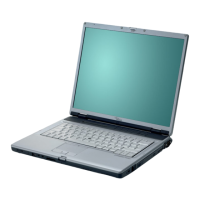
